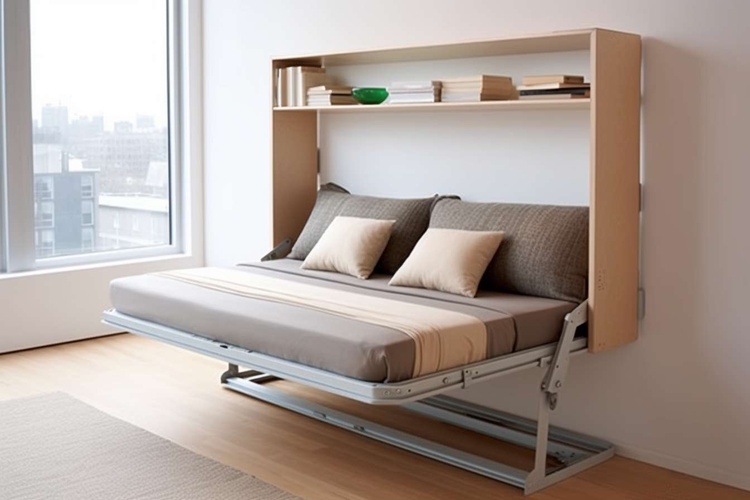Shoe Storage Solutions for Every Home Size and Style
Small space shoe storage ideas can help keep homes organized and clutter-free. Exploring vertical racks, under-bed solutions, and multi-purpose furniture can make it easier to store footwear efficiently while maintaining a tidy, accessible, and visually appealing living space.

How Do Space-Saving Shoe Storage Racks Maximize Limited Areas?
Space-saving shoe storage racks utilize vertical design principles and compact footprints to accommodate multiple pairs of shoes without consuming excessive floor space. These systems often feature tiered shelving, stackable components, or narrow profiles that fit into tight corners, closets, or behind doors. Multi-level designs can hold 20-30 pairs of shoes while occupying just a few square feet of floor space.
Over-the-door organizers represent another effective space-saving approach, transforming unused door surfaces into functional storage areas. These hanging systems typically accommodate 12-24 pairs of shoes depending on their configuration. Slim-profile tower racks, measuring just 8-12 inches deep, can fit into narrow hallways or alongside furniture without creating obstructions.
What Small Apartment Shoe Storage Solutions Work Most Effectively?
Small apartment living requires creative storage approaches that serve multiple functions without overwhelming limited space. Shoe storage ottomans and benches provide seating while concealing footwear, making them ideal for studio apartments or small entryways. These dual-purpose pieces typically hold 8-16 pairs of shoes while offering a place to sit when putting on or removing footwear.
Under-bed shoe storage containers maximize often-forgotten space beneath beds and dressers. These low-profile organizers slide easily in and out while protecting shoes from dust. Clear plastic versions allow for quick identification of contents, while fabric options blend seamlessly with bedroom decor.
Modular cube systems offer flexibility for changing needs and apartment layouts. Individual cubes can be stacked, arranged side-by-side, or reconfigured as living situations evolve. Each cube typically holds 2-4 pairs of shoes, and systems can expand from small 4-cube arrangements to larger 16-cube configurations.
Which DIY Small Space Shoe Storage Ideas Provide Affordable Solutions?
Creating custom shoe storage solutions allows for perfect sizing while staying within budget constraints. Repurposing wooden crates or milk crates creates rustic, industrial-style storage that costs significantly less than manufactured alternatives. Staining or painting these containers helps them blend with existing decor while providing sturdy shoe storage.
PVC pipe shoe racks offer another budget-friendly DIY option, particularly effective for flip-flops, sandals, and lightweight footwear. Cutting PVC pipes into appropriate lengths and mounting them horizontally creates individual slots for each pair of shoes. This system works well in closets, mudrooms, or garage areas.
Tension rod systems transform unused closet space into efficient shoe storage areas. Installing multiple tension rods at various heights creates hanging storage for heeled shoes, boots, and sneakers. Adding S-hooks or small baskets to tension rods increases versatility for different shoe types and sizes.
| Product Type | Provider | Key Features | Price Range |
|---|---|---|---|
| Over-Door Organizer | Whitmor, SimpleHouseware | 24-pocket capacity, transparent pockets | $15-$30 |
| Stackable Shoe Rack | SONGMICS, UDEAR | 4-10 tier options, metal construction | $25-$60 |
| Storage Ottoman | Ornavo Home, SONGMICS | Dual-purpose seating, fabric/leather options | $35-$80 |
| Under-Bed Container | IRIS USA, Sterilite | Clear visibility, rolling wheels available | $20-$45 |
| Modular Cube System | ClosetMaid, SONGMICS | Expandable design, various colors | $40-$120 |
Prices, rates, or cost estimates mentioned in this article are based on the latest available information but may change over time. Independent research is advised before making financial decisions.
How Do You Choose the Right Shoe Storage Capacity?
Determining appropriate shoe storage capacity requires honest assessment of current footwear collections plus anticipated growth. Most individuals own 15-25 pairs of shoes, though collections vary significantly based on lifestyle, climate, and personal preferences. Athletic enthusiasts, professionals requiring multiple dress shoe options, or fashion-conscious individuals may need storage for 40-60 pairs or more.
Consider seasonal rotation when calculating capacity needs. Winter boots, summer sandals, and athletic shoes for different activities create storage demands that fluctuate throughout the year. Selecting systems with 25-50% extra capacity accommodates seasonal variations and future purchases without requiring immediate storage upgrades.
What Maintenance Keeps Shoe Storage Systems Functional?
Regular maintenance ensures shoe storage systems remain hygienic and structurally sound over time. Periodic cleaning prevents odor buildup and extends both shoe and storage system lifespans. Wiping down surfaces monthly with appropriate cleaners removes dust, moisture, and accumulated debris.
Proper shoe preparation before storage significantly impacts long-term organization success. Allowing footwear to air dry completely prevents moisture-related damage and odors. Using cedar shoe trees or moisture-absorbing packets helps maintain shoe shapes while preventing humidity problems in enclosed storage systems.
Shoe storage solutions provide practical organization benefits while protecting valuable footwear investments. Whether choosing manufactured systems or creating DIY alternatives, the key lies in matching storage capacity and style to specific space constraints and usage patterns. Regular maintenance and thoughtful organization habits ensure these systems continue providing long-term value and functionality.




